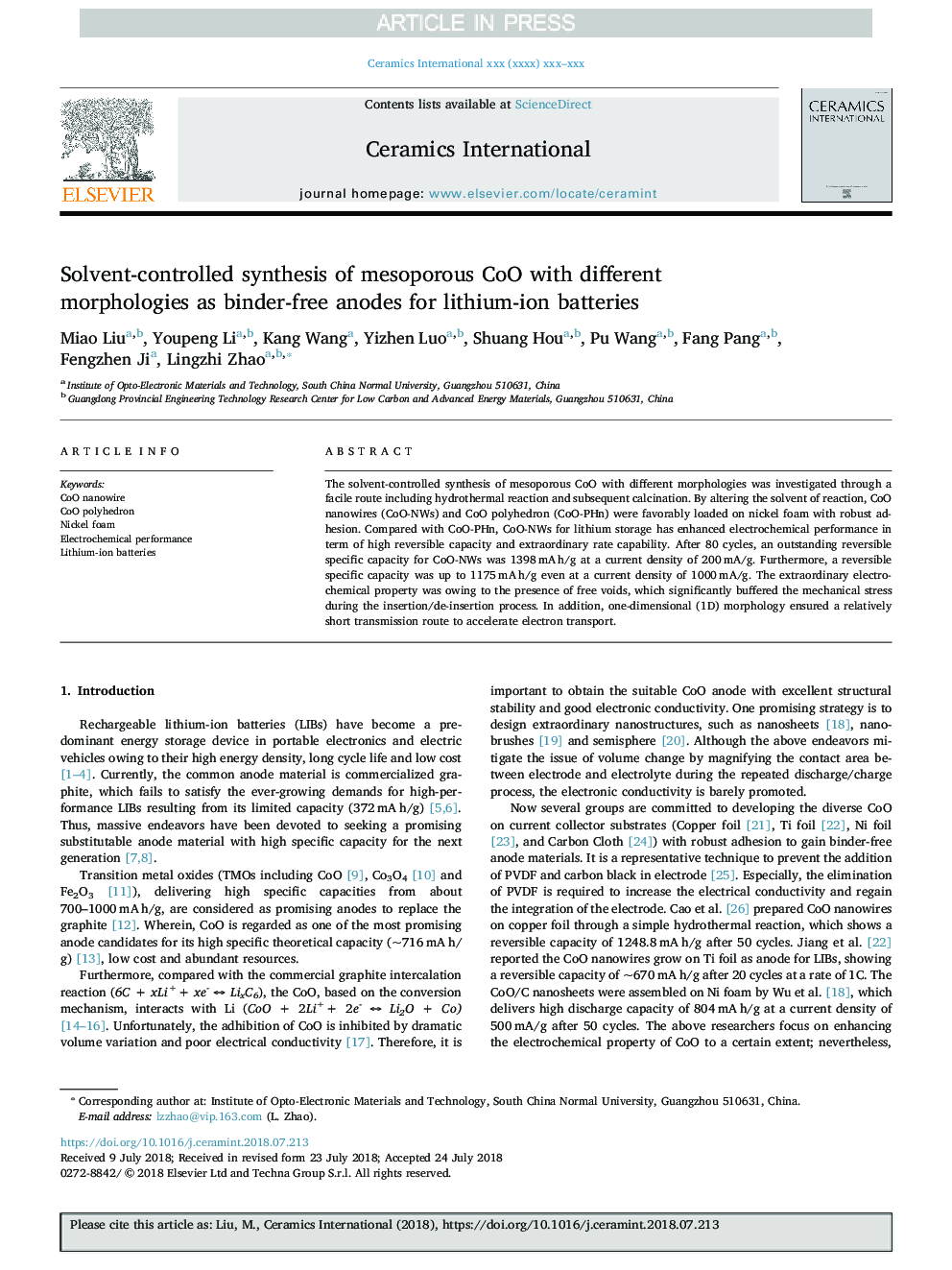| Article ID | Journal | Published Year | Pages | File Type |
|---|---|---|---|---|
| 10155434 | Ceramics International | 2018 | 8 Pages |
Abstract
The solvent-controlled synthesis of mesoporous CoO with different morphologies was investigated through a facile route including hydrothermal reaction and subsequent calcination. By altering the solvent of reaction, CoO nanowires (CoO-NWs) and CoO polyhedron (CoO-PHn) were favorably loaded on nickel foam with robust adhesion. Compared with CoO-PHn, CoO-NWs for lithium storage has enhanced electrochemical performance in term of high reversible capacity and extraordinary rate capability. After 80 cycles, an outstanding reversible specific capacity for CoO-NWs was 1398â¯mAâ¯h/g at a current density of 200â¯mA/g. Furthermore, a reversible specific capacity was up to 1175â¯mAâ¯h/g even at a current density of 1000â¯mA/g. The extraordinary electrochemical property was owing to the presence of free voids, which significantly buffered the mechanical stress during the insertion/de-insertion process. In addition, one-dimensional (1D) morphology ensured a relatively short transmission route to accelerate electron transport.
Related Topics
Physical Sciences and Engineering
Materials Science
Ceramics and Composites
Authors
Miao Liu, Youpeng Li, Kang Wang, Yizhen Luo, Shuang Hou, Pu Wang, Fang Pang, Fengzhen Ji, Lingzhi Zhao,
